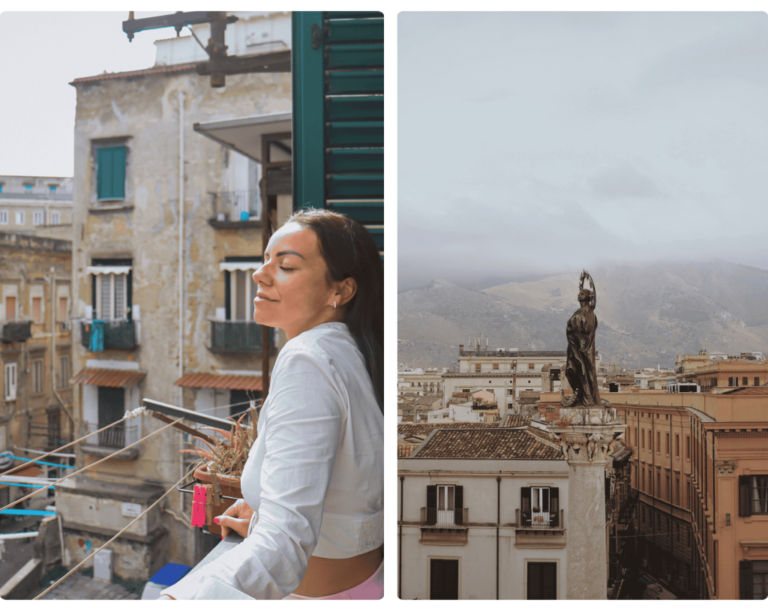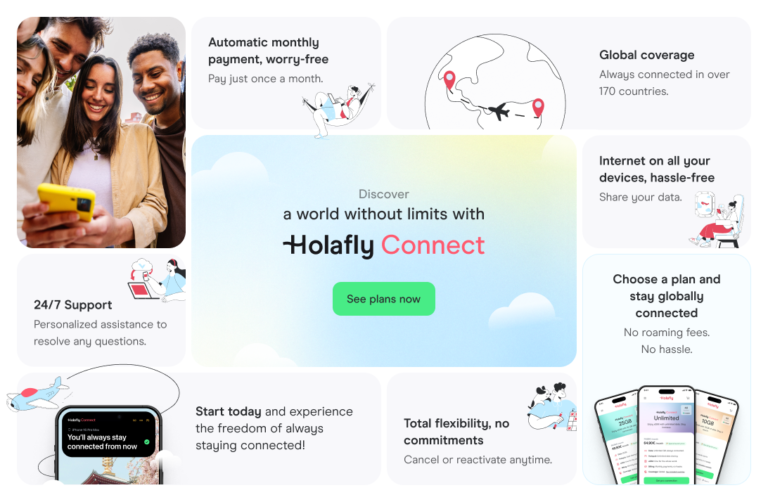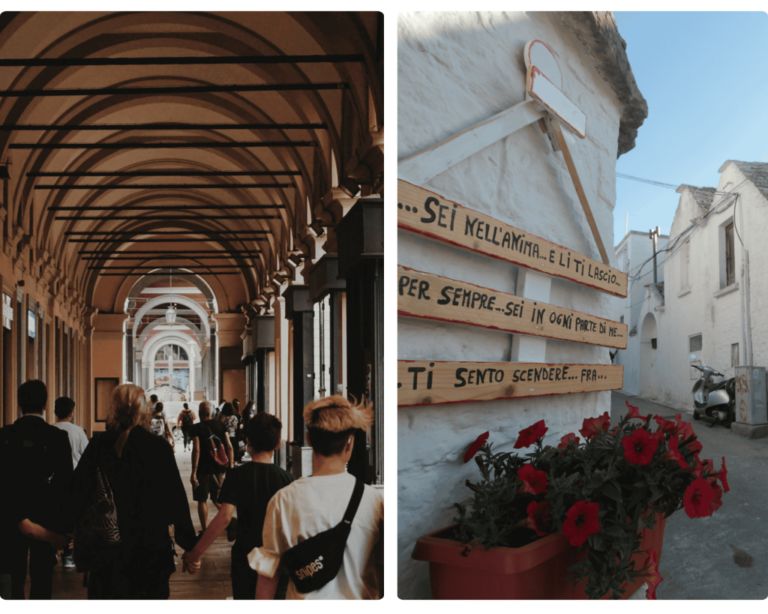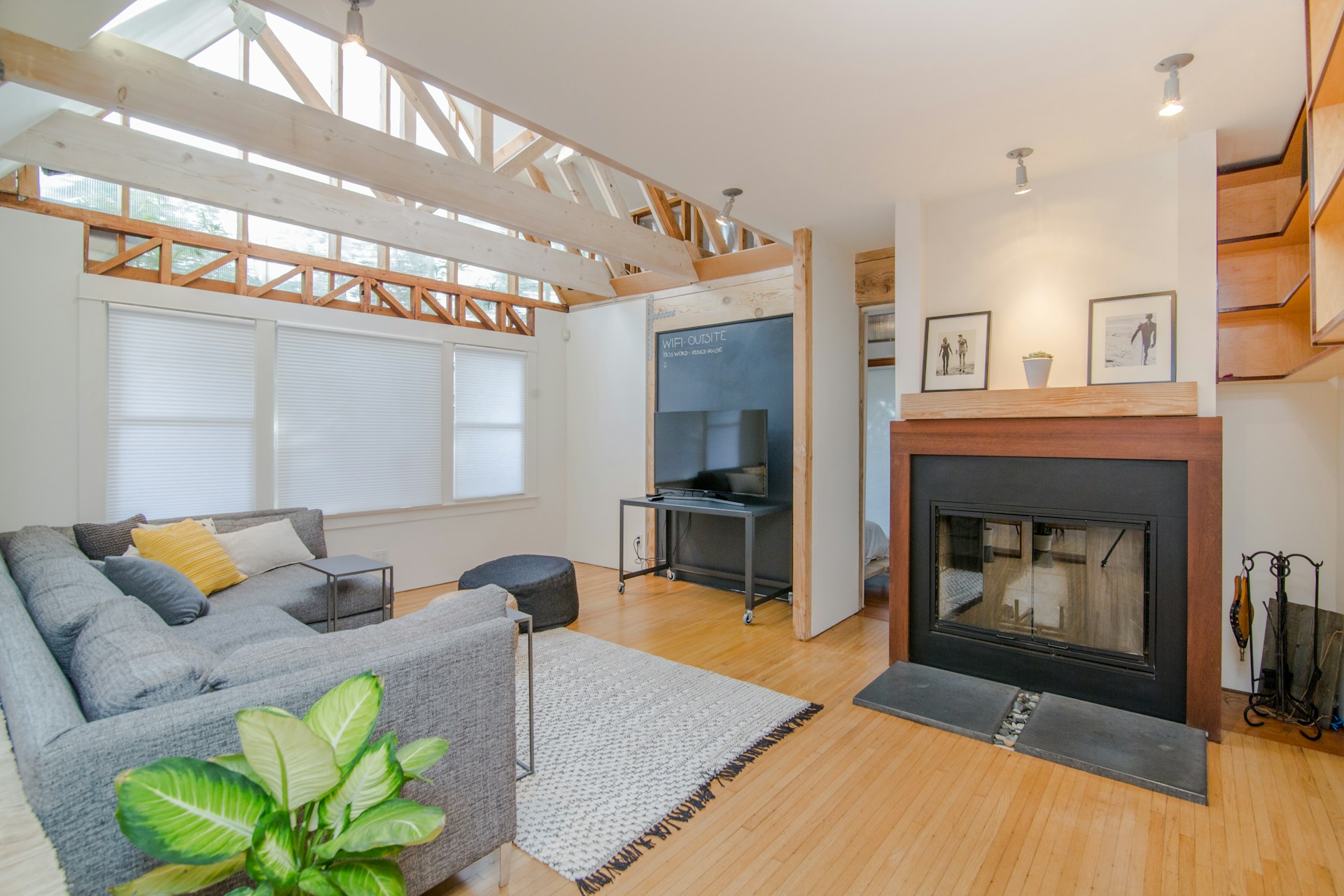Digital Nomads in Italy: A Guide to Work and Travel
Here is the complete guide that will make your way as a digital nomad in Italy easier. Procedures, services, accommodation and more.
For us, it is important that, as a digital nomad, you arrive in Italy with a clear and defined route, or at least, with a guide that outlines the main recommendations to have a rewarding experience in this beautiful country, or bel paese (as it is known in Italian). That’s why today we’re providing you with a complete guide to the best accommodation options in Italian towns and cities, and, of course, a clearer path for navigating some official procedures. Formalities such as taxes to be paid and health options available to a digital nomad residing in this country.
Italy is a destination known for its art, gastronomy, architecture and culture that is highly defined compared to other countries. For this reason, it is a place that attracts a lot of attention from digital nomads, investors and travellers from all over the world. It is normal that many questions arise about what daily life is like, the culture and how complex the adaptation will be if you decide to make it your temporary residence.
Why choose Italy to live as a digital nomad?
Italy is attractive for its beauty, diversity and the balance between quality of life and job opportunities. Many Italian cities offer international networking events, facilitating the connection between professionals from different sectors. Here we expand on some key benefits:
Active digital nomad community in Italy
Italy has experienced a steady growth of digital nomad communities in key cities such as Milan, Florence and Rome. Meetup and other platforms often host weekly gatherings of these professionals, fostering both work and personal connections. In addition to this, many university cities such as Bologna have events open to digital nomads.
Attractive pace of life
The famous concept of “dolce far niente” (the art of doing nothing) is more than just a phrase. In Italy, long lunch breaks, afternoon strolls and after-dinner meals are an integral part of the daily routine. This mindset can be beneficial for professionals seeking to find a balance between remote work and personal well-being.
Culture and leisure in every corner
Cultural diversity is another key attraction. Italy has 54 UNESCO World Heritage Sites, making it the country with the highest number of listed sites in the world. For digital nomads, this means being able to enjoy museums, architecture, festivals and music in every corner of the country. Weekends can be spent in rural or coastal destinations, such as the Cinque Terre or the Amalfi coast.
Connectivity and access to infrastructure
Italy offers optimal connectivity for digital nomads, both in terms of transport and technological infrastructure. Major cities such as Milan, Rome and Naples have international airports that are well connected to Europe and other regions, making it easy to travel for business or pleasure. The high-speed train system provides convenient travel throughout the country, connecting urban centres and tourist areas.
Visas allowing legal residence in Italy
Although Italy does not have a specific visa for digital nomads, there are several legal alternatives for those who wish to reside and work remotely in the country. Here are the most notable:
Visto lavoro autonomo
- Designed for freelancers and self-employed workers who can demonstrate a stable income.
- You are required to present employment contracts and evidence that your activity will not affect the Italian labour market.
- This type of visa is renewable annually and can be extended if conditions are maintained.
Permesso di soggiorno (temporary residence permit)
- You need to apply for this permit once you enter Italy with the corresponding visa.
- It is mandatory for stays longer than 90 days and allows you to access services such as public health.
- There are options to renew and, in some cases, change to another type of permit while living in Italy.
Schengen Visa
- Ideal for those who want to try out the digital nomad lifestyle without making a long-term commitment.
- It allows you to stay for up to 90 days within a period of 180 days in any Schengen country, including Italy.
Other relevant visas
- Student visa: If you want to combine study and remote work, this visa can be an ideal option. Many Italian universities accept exchange students who continue to work remotely for their companies.
- Residence visa for passive income: Perfect for those who do not need to work actively, but wish to live in Italy. Ideal for those who live on investments or rents.
Important: Consult with an immigration lawyer to understand which option is best suited to your personal situation. If you plan to work remotely for more than 183 days, you may be considered a tax resident, which implies tax obligations. The lawyers at Studio legale Mazzotta are a great choice for advice.

Where to live and work as a digital nomad in Italy
Italy has a diverse offer of cities and regions that suit different lifestyles and remote working needs.
Top cities for a digital nomad in Italy
- Milan
- The country’s financial and innovation centre.
- Modern coworking spaces and frequent networking events.
- High cost of living, but great cultural and culinary offerings.
- Rome
- The country’s capital, ideal for those seeking to combine history and modernity.
- Public spaces such as cafés and squares with acceptable internet connection.
- Traffic can be a challenge, but central areas are well connected.
- Florence
- Perfect for art and architecture lovers.
- Less crowded than Milan or Rome, but with good infrastructure for nomads.
- Welcoming coworking spaces and an active community of travellers.
- Bologna
- Impressive university city with a varied cultural offering.
- Lower cost of living compared to Milan or Rome.
- Excellent food and access to efficient public transport.
- Naples
- A cheaper option, with spectacular views of the Mediterranean Sea.
- Ideal for those seeking a more relaxed lifestyle.
- Internet infrastructure may be inconsistent in some areas.
Alongside the big cities, there are also small towns that are positioning themselves as centres for digital nomads, especially in rural regions in the north and south of the country. Examples such as Matera, a historic jewel in the south, or Trento in the Italian Alps, offer quiet environments with lower living costs and stable internet access.
Accommodation options for digital nomads in Italy
Italy offers multiple accommodation options to suit different budgets and needs:
- Co-living spaces: Shared spaces where living together and networking are encouraged. Ideal for short and medium stays.
- Airbnb: Perfect for those looking for flexibility in their stay. Prices vary according to the season and location.
- Furnished flats: Recommended for those planning a longer stay. Prices range from 800 to 1,500 euros per month in large cities such as Milan and Rome.
Flexible accommodation in coastal and rural areas
In cities such as Naples or the Puglia region, many nomads choose exchange houses or temporary rentals in rural villas. These options allow you to experience the authentic Italian lifestyle without the high prices of Milan or Rome. Platforms such as HomeExchange and SabbaticalHomes are gaining popularity among long-stay travellers.
Top coworking spaces for a digital nomad in Italy
Italy has seen a boom in coworking spaces, especially in its main cities. These spaces offer a professional environment, networking events and fast internet access.
- Talent Garden: With locations in Milan and Rome, it is one of the largest coworking networks in Europe. They also offer events and workshops that encourage integration with the local community.
- Impact Hub: Present in several Italian cities, focusing on innovation and social entrepreneurship.
- WeWork: Available in Milan, ideal for those looking for an international working environment.
Italy has increased its network of accessible coworking facilities, even in small towns. In Florence, for example, you will find spaces like Nana Bianca. On the other hand, cafés and public libraries in cities such as Bologna often have good internet connections. However, it is always a good idea to ask about the quality of the Wi-Fi before settling in for long hours, as not all locations offer stable services.
Important: If you are a frequent traveler and want to stay connected without worrying about expensive roaming or looking for a new SIM at every destination, Holafly’s subscription plans are for you. With a single eSIM, enjoy internet in more than 170 countries for a fixed price and no surprises on your bill. Travel without limits and connect easily and securely! 🚀🌍

Taxes to be aware of as a digital nomad in Italy
Tax residence for digital nomads
The Italian tax system is based on tax residency, which applies if you stay in the country for more than 183 days in a calendar year or if you establish your main residence there. As a digital nomad, it is important to consider this aspect to avoid tax surprises. Even if you work for companies abroad, you may be considered a tax resident and be obliged to declare your global income in Italy.
Tax incentive programmes
Italy has launched several attractive programmes to attract remote workers, such as the “impatriati” (impatriate) scheme. This scheme allows digital nomads to pay tax on only 30% or 10% of their income for five years, provided they meet certain requirements. This incentive is particularly attractive for those who want to settle long-term in the country.
Double taxation and international treaties
Italy has double taxation agreements with several countries, which prevents you from paying tax twice on the same income. If you are resident in a country with which Italy has a treaty in force, you can submit the appropriate documentation to offset or reduce your tax obligations. Seeking the advice of an international tax expert is advised to take advantage of these benefits. Auxadi Italia is one of the companies offering this specialised consultancy.

Insurance and health services for a digital nomad in Italy
Access to the public health system
The public health care system in Italy is known as Servizio Sanitario Nazionale (SSN) and provides quality health care to legal residents. Digital nomads who obtain a visa implying residency can also register with the SSN, although this generally requires the payment of an annual fee to cover basic services.
Private health insurance and recommended options
Many digital nomads opt for international private insurance to complement access to public health care. Companies such as Cigna, Allianz and AXA offer comprehensive cover including care in private clinics and hospitals in Italy. These insurances guarantee preferential treatment and shorter waiting times.
Daily life as a digital nomad in Italy
Transport and mobility
Italy has an efficient and varied transport system. Major cities have well-connected trains, buses, trams and metros. The national rail network allows convenient travel between cities with high-speed options such as Frecciarossa trains. If you prefer to drive, you can use your foreign licence for a limited time, but in case of longer stays, you will have to obtain or validate an Italian licence.
Managing your finances and recommended banks
Opening a bank account in Italy can simplify your transactions. Traditional banks such as UniCredit and Intesa Sanpaolo offer accounts for foreigners, although some nomads prefer digital options such as N26 or Revolut for their convenience and low fees. For cash withdrawals, ATMs are available in most cities, but be sure to check international transaction fees.
Food: local markets and restaurants
Italy is famous for its cuisine, and digital nomads can enjoy it without spending too much. Supermarkets such as Conad, Esselunga and Coop are good options for daily shopping. As for restaurants, you can enjoy affordable meals in trattorias and osterias, where traditional dishes are served at reasonable prices. Eating out can be an affordable experience if you opt for the “menù del giorno” (menu of the day), available in many restaurants.
Leisure, festivals and free time
Italy offers a wide variety of leisure activities for digital nomads. From hiking in the Dolomites to relaxing on the beaches of Sicily, the options are diverse. Major cities such as Rome, Milan and Venice host cultural festivals throughout the year, such as the Venice Biennale and Milan Fashion Week. There are also multiple gyms and sports clubs that allow flexible memberships.
To unwind after work, Italy has many urban parks and historic gardens, such as the Boboli Gardens in Florence or Sempione Park in Milan. These spaces allow you to relax and enjoy a natural environment without leaving the city. If you are looking for weekend getaways, the mountainous regions of the north or the Mediterranean coast offer perfect options for sightseeing and relaxation.
Best seasons to be in Italy
Spring (March to May) and autumn (September to November) are ideal for digital nomads because of the mild climate and there being less tourism. In spring, the towns come alive with festivities such as Easter and outdoor events, while in autumn you can enjoy the grape harvest and Tuscany’s colourful landscape.
Summer (June to August) brings heat and crowds, especially in destinations such as Rome and Florence, although coastal areas such as Sicily and Naples are perfect for combining work and the beach. Particularly notable in this season are festivals such as the Opera in Verona and the Jazz Festival in Perugia.
Winter (December to February) offers a quieter atmosphere, ideal for working in cosy cafés and touring the cities without the crowds. The north of the country is an excellent destination for skiing in the Alps, while in the south temperatures are milder, hovering at around 10°C.
Cost of living as a digital nomad in Italy
Accommodation
The cost of living varies from city to city. In Milan and Rome, renting a flat can cost between 1,000 and 1,500 euros per month, while in smaller cities, such as Bologna or Turin, prices go down to 600-800 euros per month.
Coworking and connectivity
A coworking space in Italy costs around 200 to 350 euros per month, depending on the location and services offered. Internet connection is fairly good in most urban areas, though in rural areas it can be slower.
Food and transport
Eating out is relatively inexpensive, with set menus costing around 15-20 euros. Public transport in major cities costs around 1.50 euros per ticket or 35-40 euros for a monthly pass. Italy is a complete destination for digital nomads, with a unique combination of history, culture, connectivity and quality of life.
Culture and adapting to the digital nomad lifestyle in Italy
Adapting to Italian culture can be one of the most rewarding aspects for a digital nomad. Italy has a more relaxed pace of life compared to other European countries. Italians value family time, shared meals and socialising. In small towns, it is common to find local markets where people buy fresh food every day, allowing newcomers to integrate easily into the community.
The language barrier can be a challenge in some regions, especially in rural areas. However, in large cities such as Milan, Rome and Florence, many people speak English, making it easier for those who are not yet fluent in Italian to integrate. Learning a few basic phrases of the local language not only makes everyday interactions easier, but is also a way to gain the respect of the local community.





 Language
Language 


















 No results found
No results found







